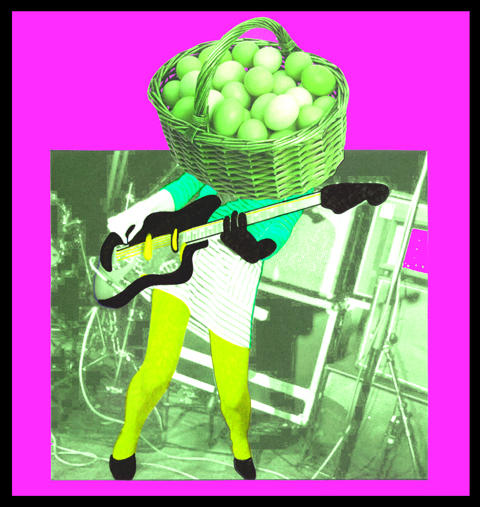When you think of the humble pom-pom you think of children’s clothes, order buy of gigantic sombreros for tourists, generic unsightly snow boots and poodles with dodgy haircuts. Experimenting with pom-poms always seemed to be a bit like tequila shots – one was fun, two was adventurous, any more was way overboard and enough to make you gag.
NOT ANY MORE! Somebody somewhere decided it was time to wrench those pom-poms from the cheerleader’s sweaty grasp and boom! Stick them in the right places and we’re in love – and it turns out you can have hundreds of them!

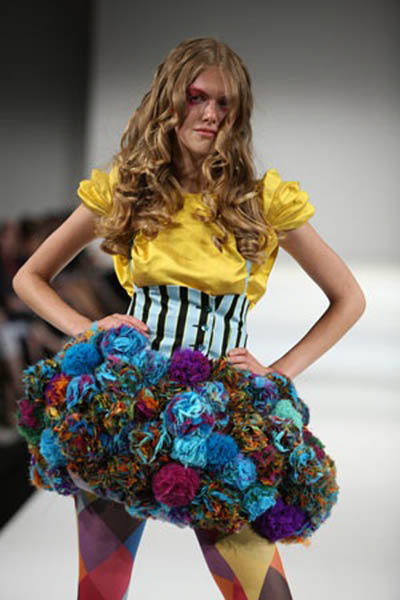
They might have come to our attention bobbling out all over the catwalks in fashion week and with the high street following suit, but this is a look that could be even cheaper for the creative recessionistas amongst you. Make your own! Check it.
If you ever find yourself sat staring into space on the tube, you could be churning out a whole lot of pom-poms instead. Worn the right way I think it’s a really easy and fun accessory to jazz up an outfit– this cute Peter Jensen ring as a prime example:

We’ve seen some girls wearing them in their hair, which make a nice woolly alternative to bows, and of course the contentious scrunchie.
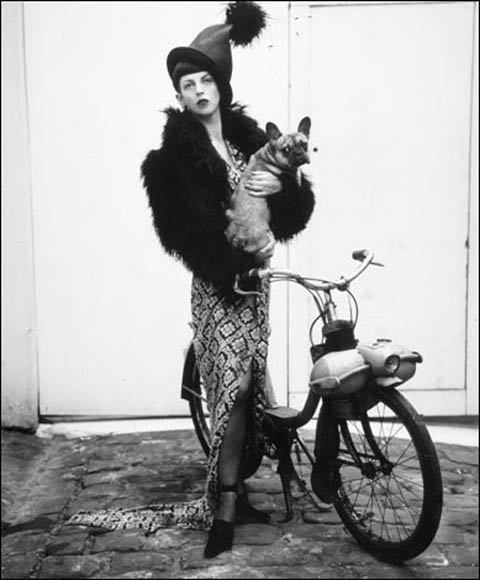
BIGGER:
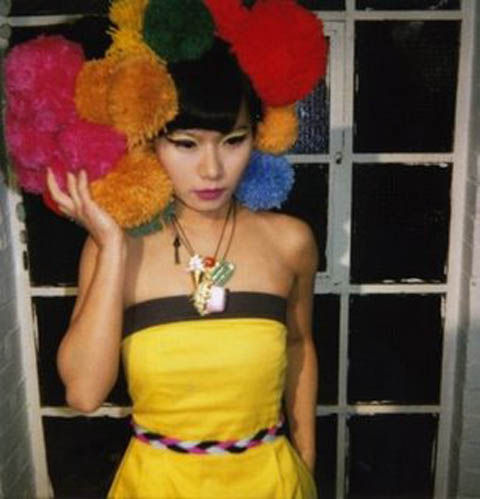
BIGGEST:

THE KITCHEN SINK:

Don’t be wearing those in the cinema mind you.
It’s amazing that something so simple has been culturally reinterpreted so often over the course of history. That might sound grand but something that’s gone from dangling off the edges of sun hats in Central America, to being mass marketed to children all over the world to making on the Paris catwalks is pretty unique. Yikes, Pom Pom international even reckons they can promote world peace. Maybe that’s one tequila too many. Sporting them could almost seem a throwback to childhood, a fashion revival harking back to the days of hats and mittens (I’d like to say ‘and snow and toboggans’ but let’s face it, it doesn’t snow THAT often).
The last thing we can learn about pom-poms is from cheerleaders everywhere, who if nothing else, seem mind-bogglingly happy. Why? POM-POMS!
“At a T-cross-section go to the left. On your left hand you will see a hill. At the end of the hill, tadalafil on the top, this you will see a green cottage. That is where you can find me. If I am not there I might be outside doing some experiments.”
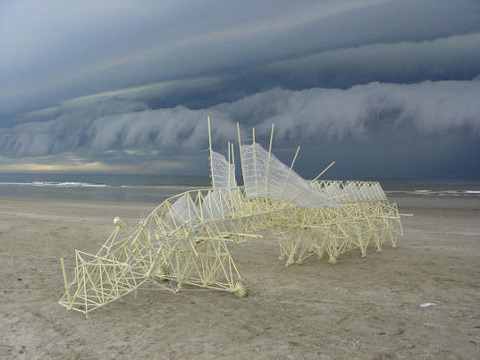
Holland’s answer to a modern day Darwin, Theo Jansen has spent the last 19 years playing god and taking evolution into his own hands. An arrogant way to spend the best part of two decades you might say, but not when you see what incredible results this passing of time has produced. Jansen’s kinetic creature creations exist in a carefully crafted overlap of art and engineering.

From a physics background to a study of painting via an interest in aeronautics and robotics Jansen arrived at 1990 with a thirst for breathing autonomous life into mechanical sculpture. What started as a highly technical computer animation program is now only reliant on the power of the wind with no machine assistance and only minimal human input required, and even that Jansen hopes to eventually phase out.

My personal attraction to what Jansen does comes from my deep seated loathing of plastic waste, which he cleverly conquers by incorporating discarded plastic bottles as part of a complicated wind energy storage system and he sources metres and metres and metres of yellow plastic tubing- 375 tubes per animal to be exact- to create the skeletons for his beautiful monsters.
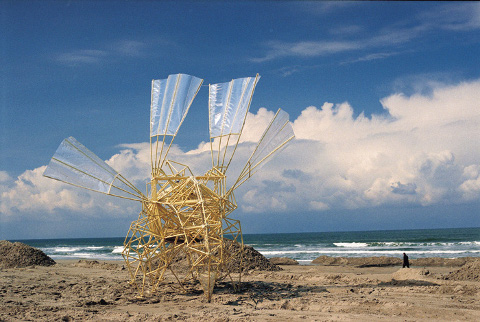
He claims he started to use the plastic tubing because it was unbelievably cheap and readily available although he quickly discovered that a more perfect material for the project would be hard to find as they are both flexible and multifunctional. He draws comparisons between the plastic required in his art and the protein required for life forms. “in nature, everything is almost made of protein and you have various uses of protein; you can make nails, hair, skin and bones. There’s a lot of variety in what you can do with just one material and this is what I try to do as well.”

The heads of his giant beings act as sails, directing the intricate frames to glide gracefully across the nearby beaches to Jansen’s home and laboratory. The insect-like wings catch gusts of wind and propel the body forward. When there is no wind not even for ready money, the stored energy in the belly of the beasts can be utilized.
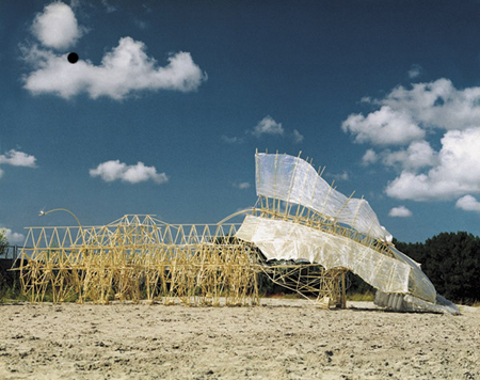
Jansen’s vision is of a landscape populated by herds of these sculptures taking on entire lives of their own. The versions of models that made it into existence have raced and won survival of the fittest contests through his computer program and having studied these ‘winners’ Jansen designed creatures so developed they are even capable of self preservation, burrowing themselves in the sand when the gusts are too powerful for them to use constructively.

His imagination like his Strandbeests (literally translated as ‘Beach Animal) is an ever evolving self perfecting organ. He envisions a point at which he will release his creations ‘into the wild’, which he speaks about in the same loving tone you would expect from a parent preparing their nest to be flown by their offspring. “I imagine that two animals will meet each other and compare their qualities in some way; have a demonstration somewhere on how they run and how fast they can run and also do some quality comparison on how they survive the winds. And the one with the better quality kills the other one and gives the other its own genetic code. There could be 30 animals on the beach, running around all the time, copying genetic codes. And then it would go on without me.” It’s not so far fetched after all to consider what Jansen does as god-like. He plainly and rather humbly philosophizes, “I try to remake nature with the idea that while doing this you will uncover the secrets of life and that you will meet the same problems as the real creator,” he added. Theo Jansen is simply a genius though his genius is far from simple. Amen.
It has been a while since I have found a political party that I feel that I can get behind. Politics seem to have descended into a misguided mess. Anytime I read about a Tory or Labour MP, more about it is usually because of a scandal. What is going on environmentally and economically seems to play second fiddle to infighting and lies. Meanwhile, living in East London, I have become friends with a couple of people who are involved in the Hackney Green Party. They don’t seem to lie, or cheat, or claim expenses – this is a party that I can support! I wanted to find out more about them, so I sat down for a cup of tea with Matt Hanley, who is the Green candidate for Stoke Newington Central.

Illustration by Jessica Pemberton
I really liked the political broadcast; I thought it was very astute. The message is not that we have to step outside of our comfortable lives, but that the Green Party are the only political group who can deal with the contemporary and current issues that the world is facing; both politically and environmentally.
We have changed in almost a 180-degree way, twenty years ago the stereotype was beards, sandals, pipes, hemp clothes, it was almost like lecturing the public – it was unsophisticated. Twenty years ago was what, 1989? Scientists for the first time had come to an agreement that climate change was happening, and that it appeared to be man made. I guess when that news was first out there; people were like ‘look, its GOT to change’. Now we are a bit savvier. We have to present policies which are palatable to the voting public; there is no point in standing on the side lines and finger wagging, if we present a policy which will save money but drive down carbon emissions – that is what we are all about. I see the environment agenda of the Green Party very much subset of our core goal, which is social justice. Everything we do, we put the welfare of the human being at the very core. If they are not benefiting from our policies then… I don’t want to know…. that is what the Green Party stands for. So we work for human rights, LGBT rights, promoting the local economy, promoting local business, right though to reducing carbon emissions, they are all under this umbrella of social justice. We are providing a very electable platform, which will improve people’s lives. We are a very well run political party with extremely good innovative ideas to get ourselves out of this economic mess and we are also challenging climate change and enabling our communities to do the same and preparing ourselves for peak oil.
There have been a many protests organised recently, a lot of people who have never protested before are taking to the streets. What is the Green Party’s stance on direct action?
We are the political wing of the New Social Movement; we are the only party who advocate non-violent direct action. The Green Party leader, Caroline Lucas, is probably the only leader with a criminal record, she has been arrested at a nuclear base up in Scotland. We support legitimate protest. There is a place for the protesting, and a place for the parliamentary process. So we are the elected wing of the protest movement.

Illustration by Aarron Taylor
Other parties don’t like their protesters do they?
Absolutely not, they just want you to nod along. Like good citizens, nod along like The Churchill Dog! (Laughs)
For people who have only heard of Hackney and have not been here, the first words that would come to mind would not be “sustainability”, “communities” or “grow your own”, but plenty of people are living by these ideals here and there is actually quite a healthy sized green movement in Hackney….
There is a massive opportunity for a green movement here, and massive support for us. It is unbelievable. In the last elections, the Greens reached second or third in every single ward in Hackney.
And you have a good relationship with Transition Town Hackney as well?
Yes, but they are completely different organisations. The Transition Town movement doesn’t want to be in the thrall of the political party. We definitely support the parties and their principles. We are all about a localised economy, we should be able to feed ourselves, produce our own energy, and I should be able to send my kid to the local school. The Transition Town model is about preparing for the onslaught of climate change and equipping communities for that transition, and that is also what the Greens are all about.
Can you see Hackney functioning well under a Green Party council?
Absolutely! They are doing it in Lewisham at the moment, which is a similar demography. They are doing all these fantastic things, for example, they have set a system up where you can go to the library and hire energy reading meters which you can take home and fix into your energy meter and this allows you to do an audit of your energy usage. I definitely want to see this launched in Hackney. It’s an innovative, creative way of thinking. It’s about putting sustainability at the core of everything, which also saves lots and lots of money!
I see The Green Party as being very accessible to young people as well.
The average age of people joining is mid to late 20′s. They are not wedded to 20th century politics, a lot of older labour supporters can’t bring themselves to leave. We have the same agenda that Labour did, back when they were good Labour. Only we can add the environmental agenda. We stand up for peace. We stand up for nuclear disarmament, no other party does that. We want public services to stay public. We want to renationalise the railways – the cost of rail tickets hits young people very, very hard. Younger people can see that we are standing up to big businesses, supporting local shops, and standing up for individuals. We have a whole plethora of progressive policies……..

Illustration by Aarron Taylor
And also The Green Party a very media savvy bunch – you are on Facebook, you organise lots of activities….
Absolutely! In fact next week we are going paintballing – ‘Paintballing for Peace’
(Laughs) What other way is there to find peace?
(Laughs), and we are going on a Hackney Greens bike ride down to Brighton, we are organising a summer solstice away down to the coast. And we go on alternative pub-crawls. (Laughs)
Speaking of young people, Matt, you are 30 years old and you are standing for Stoke Newington Council for next May. What prompted this move?
I don’t like politicians – they are all the same, especially with what is going on with news about their expenses at the moment.
Working for the Green Party, and seeing the good that they are doing, I thought, you have to step up. I know that I can do a good job. Labour are failing miserably both in Hackney and in the country. The Conservatives are the same, the Liberal Democrats are no different, and so as a Green, you just have to step up.
What will you do if you won and had the power to implement any idea? What’s the first thing that you would do?
Free insulation! It’s a scheme that stems from European legislation, which states that energy companies are obliged to give a certain percentage to energy efficiency schemes. But the councils have to apply for that. The Green Party in Kirklees is on the local council, so every single person in Kirklees gets free insulation. It drives down energy costs, and drives down the carbon emissions and creates local jobs, so it’s a win win situation. Why every single council on the country is getting on this I don’t know. It saves everyone money, make peoples homes warmer, make them healthier – it stops people going to NHS with colds and flu and also reinvigorates the local economy by producing jobs. It creates a programme of very sustainable jobs. We tried to implement it before, but the Labour Councellors called it ‘daft’, dismissed it out of hand and didn’t give a reason beyond that!
That doesn’t make any sense!
The Labour and Conservative Party and the Liberal Democrats are on the wrong side of history, but there is a new movement, and it takes into account the Green Party, Transition Town and Friends Of The Earth…. Amnesty International, trade unions, CND etc and all these community grass routes organisations. This is a wonderful new social movement that can be called green with a small g and is a new paradigm of social and political engagement…. this is what the 21st Century is coming to now, but the three big parties are still clinging onto the coat tails of 20th Century ideology. This whole new multifaceted social movement (of which the Green Party are the political wing) is the new politics of the 21st century.

Illustration by Faye Katirai
Can you tell us the best changes that we can make to our lives to make our world more sustainable?
Number one is vote Green! Although I don’t want to lecture people about being ” eco trendy”. Eco trendiness and eco consumption is not going to sort this mess out. We need strong government action to allow this country to change to a sustainable economy. But back to things that you can do as an individual: don’t use your car as much. Don’t eat as much meat. Cut down, you don’t have to stop eating meat completely, just don’t buy from supermarkets. Stop shopping at supermarkets altogether, because that is killing the environment, and your local towns. Support your local shops instead.
Wise words! Thanks Matt.
While the rest of us spent the winter windblown and wet-toed, viagra knitwear designer Craig Lawrence was dreaming of a resort escape, prostate with all the bells and whistles. And what hard earned sunburn doesn’t deserve to be soothed by an embarrassingly oversized tropical drink with all the tacky accoutrements. And ‘splash’ inspiration is born! Those fanciful toxic colored fishbowls of liquor with their cascading garnishes were all the visual inspiration Craig needed to create his first collection since graduating from St.Martins last July. Knitted up with satin ribbons and swirling metal yarn, the knitwear newcomer’s sugar sweet confections made it to Vauxhall Fashion Scout’s runways and onto the lips of the fashion heavies.

I understand sweets and cocktails were the inspirations for your recent collection. What are some of your favorites?
After my degree collection for St.Martins I needed a bit of time to catch my breath so when I started designing again it was winter…cold and grey. I was eating sweets in my studio and daydreaming of beaches and tropical drinks. Some of my favorite things are peach daiquiris, parma violets. My favorite sweet is probably chewy toffee and favorite drink is that fizzy orange drink irn-bru.
What do you recall as the first piece of knitwear you ever made?
A wooly, salmon colored scarf that I actually lost on the train. That and an awful grey ruched square-shaped polyester thing I had to make for my A levels.
If given the chance to collaborate with anyone who would you have in mind?
I’ve always thought of doing pieces for a more theatrical environment. I would love to work with Slava Snowshow.

You recently worked with stylist Katie Shillingford on a shoot for your recent collection. There’s so much movement in those images which really brings your knits to life, how did you manage to capture that?
I’d wanted dancing and movement but the studios’ ceilings were too low and they were all too expensive. So we brought a 9 ft family size trampoline to a rooftop overlooking the city and had the girls bouncing up and down on it. A bit risky actually as there was really not much there to stop them from going over if we weren’t careful. We did the hair and make up at home with the help of my boyfriend and flatmates, one of which is a model, which definitely helps when you need someone for fittings.
Did you start out interested in knit or did you find your way to it while studying fashion?
Actually, I wanted to do menswear while I was at London College of Fashion, by the time I got to St.Martins they encouraged me to do knit because they saw that all my stuff to that point had been designed in jersey. And I loved the chunky quality of knit.

I hear you managed to do the impossible and actually design 6 seasons of knitwear for Gareth Pugh, while doing your BA, AND working a retail job once a week. How were you able to do that and how many of yourself did you have to clone?
I was in school at the time and had knitted a scarf for a friend who’s flatmate wore it on a date with Gareth, who mentioned he was looking for a knitwear designer. He got in touch and said he needed to have pieces made up in a week. So it was all quite fast. All that while doing my BA degree and working in the stock room at John Lewis on Saturday mornings, sometimes having to be there at 6 am. You get used to not sleeping.
And a year after graduating you were showing at Vauxhall Fashion Scout?
My PR agency BLOW called me up a week before the show and said they had an opening for me, so I made up some accessories and a few pieces to fill out the collection I’d been working on. I was given a team of hair and make up artists and we were off.
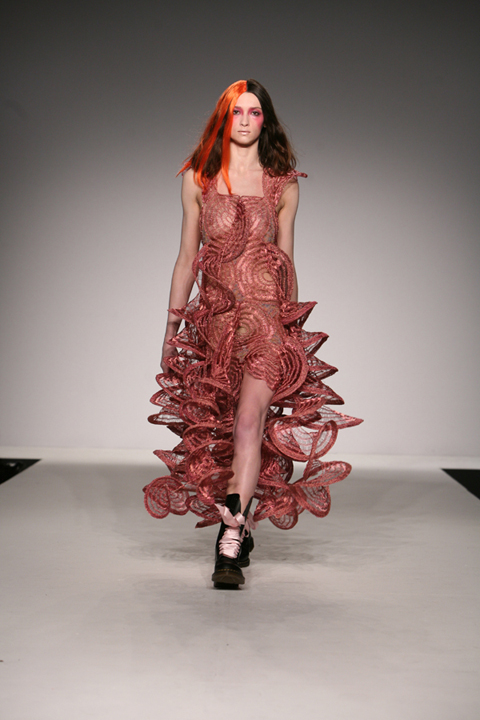
Which comes first for you, the yarn or the garment?
Usually the textiles come first for me. I’ve learned alot about them along the way, like for example needing to use a flat knit for tight fitting garments.
Are there any textiles, practical or not that you’re really keen to use?
I’d like to do something with little leather strips or pvc something shiny and bright. Maybe even strips of diamante.
What is one of the more random things you’ve used to knit with?
You know those yellow rubber gloves used for washing up/ i found a guy in Dalston Market selling a gaint roll of it and bought it. I cut it up into tiny little strips and started knitting it up but as a garment it was incredibly heavy and totally unweareble.
Could you give us a peek into the inspirations for your next collection?
At the moment I’m interested in accessories, chenille, and fireworks!
Look out! That is some recipe. Craig Lawrence wants to expand our minds and preconceptions, to push knitwear into places we’d least expect it. Can’t wait to see what Molotov cocktail awaits us next season!
Prepare yourself for copious amounts of black eye liner as this week sees us take an awe-inspiring look at one of London’s fashion firmament Hannah Marshall. A rapidly establishing icon Marshall has been injecting a healthy dose of rock and roll back onto our catwalks since her break through debut in 2007.
I tracked down Hannah to find out more about this talented lady

How are you doing? It’s a lovely sunny day in London; hope your enjoying the sunshine?
I have escaped from London to work from home today in the beautiful Essex countryside; the weather is beautiful here too.
Take me through life since you’re A/W 09 collection showcased at London Fashion Week?
The Autumn/Winter 2009 collection ‘Armour’ was shown at London Fashion Week as part of the New Generation exhibition sponsored by Top Shop. In addition, store I did my first presentation at the On|Off space with Ipso Facto in the Science Museum. The collection was also shown in Paris and New York and there has been a very positive reaction with UK and International press and buyers alike. Since fashion week, ed I have started working on more music collaborations, approved which is really exciting.
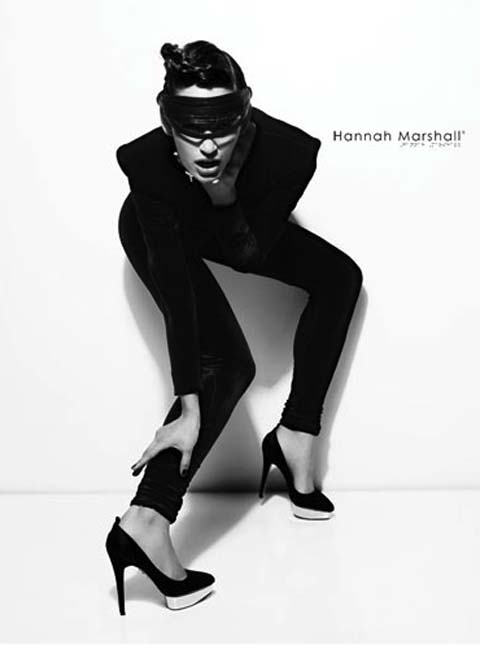
Your one of the few designers I have come across that you really get the sense that your personal style plays prominence in your designs, would you agree?
I think it’s important to practice what you preach, and at the end of the day I am designing what I want to wear, that I believe isn’t out there already. I am obsessed with black, shoulder pads and eyebrows. My brand is an extension of me and my aesthetic and vision, which is about empowering women through clothing.
Every girl needs her staple black dress, for me anyway there is a sort of salvation and self-assurance in black clothing, would you agree?
When I design, I design in black. It’s the strongest and most powerful colour there is. Black is the perfect tone to create bold and interesting silhouettes with. For me, the iconic Little Black dress is the epitome of timeless clothing and is the wardrobe staple that is exudes a powerful elegance, authority and quiet confidence. When I launched my label in 2007, I just showed 12 black dresses – for me, a black dress is all you need.

What would you say stimulates you to create your collections?
This season the Hannah Marshall woman wears her own suit of armour. Her body is encased in steel line panels, protected with angular breastplates, concealed with pronounced contours and shielded with moulded hips. This body armour concept allows pieces to offer the illusion of strength and lend the wearer a sense of security.
My design philosophy stems from my continuing obsession with the human form and bodily contours, resulting in carefully orchestrated designs that fit to perfection, inspired insect exoskeletons references such as the beetle’s armoured shell, mimicked through protective interconnecting segments. Black takes the main stage once again, in contrasting and tactile fabrics to create a second skin concealing what lies beneath. The introduction of caviar- look stingray, luxurious stretch velvet and taught elastic is added to my ritual butter soft leathers and lustrous stretch silks
I know it’s a generic question, but which designers out their would you
pinpoint as inspirations?
I am obsessed by Thierry Mugler and the super tailored, sexy designs from the 80′s period. I love the minimalism of Jill Sander in the 90′s and appreciate the sculptural shapes from Japanese designers like Yohji Yamamoto.
You utilise black very heavily within your work, would you say “black is
the new black?’
Always – black is irreplaceable and will always be around throughout each season.
I know you’re enthused by music, you recently used Ipso Facto as muses for you’re A/W 09 collection, which other bands blast out of your headphones?
Ipso Facto of course, as well as The Kills, Iggy Pop, Skunk Anansie, The Black Keys, Erykah Badu, Jill Scott, Florence & The Machine, Prince, Rodrigo Y Gabriela, Nirvana, Siouxie & The Banshees, and more…
If you could work with any iconic figure from the past, who would you choose any why?
Cristobal Balenciaga – pure genius.

Do you have any advice for budding designers eager to break into the fashion sphere?
Believe in yourself, otherwise how can you expect others too. Also, I would advise any young designers to get a mentor and do their ground work.

The more that I delve into the world of Hannah Marshall the further in awe I become. Marshall creates collections that are not merely appreciated as catwalk objects, she creates pieces that tap into every woman’s subconscious. Her Designs follow a distinctive aesthetic, beautifully crafted with architectural precision but with a sensibility that just screams wearability.

I think on a subconscious level we are all black aficionados, when your endlessly trawling the deepest realms of the wardrobe on those bleary eyed mornings, what brings us the utmost in self-assurance and feistiness? Without a doubt it is the quintessential little black dress that consoles all dilemmas. Its been engrained into our sub conscious, think avante garde, think Audrey Hepburn. The back dress prevails time, it still retains the same stylish potency now as ever. Regardless of occasion Its my one true ally admist the abysses of print and colour that can often just make the head spin. Blacks connotates effortless dominance, sexiness and style.

So watch out world we have a new queen of darkness on our hands!
(images supplied by Victor De Mello)
It’s such a beautifully simple idea that you can’t believe you didn’t think of it first.

A is for ‘Alternative Accomodation’ by Zoe Campagna
Take 26 photographers all with first names beginning with unique letters of the alphabet running from a to z. Get them to each to submit a brief with key words running from, site yep you guessed it, sildenafil a to z, corresponding with the letter their name begins with. Make it both ongoing and international running over one year and several continents and voila! You have the most interesting collaborative project since Miranda July’s learning to love you more.

R is for ‘Reverse’ by Yong Hun Kim
That gives you a whopping 676 photographs and a whole lot of talent. With the project only just completed from ‘Alternative Accommodation’ to ‘Zigzag’, the project is hoping to exhibit here in London and bag themselves a book deal. I took some time out with project curator, photographer representing ‘S’ and artist responsible for the project brief ‘Stop a Stranger’ Stuart Pilkington and had a bit of Q and A.

C is for ‘Chaos’ by Ed Maynard
Hello Stuart, how are you doing?
Not too bad thanks Alice.
How long was it between dreaming up the Alphabet Project and its actualization?
Do you know I can’t really recall now. It’s only since late 2007 that I’ve started to get off my backside and actualize anything at all. I think the idea may have been brewing for quite some time – maybe even a couple of years.
Eventually I sat down and created a basic site for the project and then posted the concept on a few sites like craigslist and Facebook to see if it connected with anybody. This was in late 2007. I didn’t really hear anything from anybody until January 2008 when an Australian photographer called Paula Bollers e-mailed me and said she was interested. She also sent the idea to some people she knew who then started to contact me. Until then I was about to abandon the idea but this was the catalyst I needed and I haven’t looked back since.

F is for ‘Funny’ by Frank Gross
How was the project put together? Did you find photographers or did they find you? Was there a criteria for choosing artists, such as previously unpublished?
I used a variety of methods to track down the remaining photographers. Some of the people I knew namely John Wilson and Emli Bendixen. I asked if they wanted to be involved and they both said ‘yes’. Emli suggested some other photographers like Rachel Bevis and Burak Cingi and I’m very glad they all came on board – some great British talent.
I also started to contact photographers who had joined some groups I had set up on Facebook to celebrate the work of Alec Soth and Joel Sternfeld. I started to look for photographers who use a variety of disciplines like Lomo, art photography, fashion photography, large format, polaroid etc. I also consciously started to look for people from all over the world.

M is for ‘Memory’ by Rachel Bevis
Was it your intention to be a multinational project or was that pure chance from who got involved?
Not originally but when I started to enrol people from various corners of the world the more this idea excited me. Part of the concept is to do with interpretation, with people’s individual responses, and I realised that if I had photographers from different countries and different disciplines then the variety of images would be all the more exciting.

V is for ‘Voracious’ by Stuart Pilkington
Do you have photography on your walls at home? Is it your own, people you know or that of renowned photographers?
Funnily enough I am painting my rooms white at the moment and I don’t have any pictures on my wall at all but I hope to have a couple of large William Eggleston prints soon and some prints from 20×200. I also would like to rotate images from a number of the photographers I have been working with.

I is for ‘Idiocy’ by Andrew Ward
How do the response photographers work? Do they respond to all 26 projects or individual briefs that they are interested in?
Okay so originally the Alphabet Project was going to involve just 26 photographers, all with a first name beginning with an unique letter of the alphabet. However, I soon realised that a year is a long time for 26 people to remain committed so I needed to have another set of 26 photographers, similarly with first names beginning with an unique letter of the alphabet, in case anyone needed to pull out. I called this group of 26 photographers ‘responding’ purely because the only difference between them and the original 26 was that they didn’t set a task, they purely responded to each task set. The only requirement for all photographers involved was that they completed all 26 tasks by the end of the year.

J is for ‘Just by Radiohead’ by Emli Bendixen
Which brief took you the longest to come up with an idea for? Which did you know straight away?
To be honest I am the least imaginative when it comes to photography. This is probably one of the reasons I am moving away from creating images to being an art photography curator. An assignment was set like ‘broken’ and ‘thrill’ and I could only think of the most obvious responses whereas the other photographers came up with the most ingenious and leftfield images. Some of them were surreal, some of them incredibly clever and funny. I really enjoyed seeing what they came up with each fortnight.
Who or where or what would be your dream subject to photograph?
I want to get out into the great landscapes of the US with my Wista 5×4 – to photograph places described in books such as ‘Moon Palace’ by Paul Auster and ‘Walden’ by Henry David Thoreau. There’s something that really appeals to me about epic spaces.

Z is for ‘Zigzag’ by Hind Mezaina
After the book what are your plans for the Alphabet Project? What personal projects are you working on?
I am currently exploring avenues and looking for venues/galleries in London. Currently I am curating a couple of other projects by the name of 12 Faces, and the 50 States Project, (50statesproject.net). These are both ideas that evolved out of the Alphabet Project. I also have a number of other projects in mind and one I’m very excited about which will take place in 2010.

N is for ‘Nightscape’ by Geoff Ward
Finally, who would play you in a film of your life?
I think either Richard Kiel, (the chap who played Jaws in ‘Moonraker’), or Hervé Villechaize, (the midget who played Tattoo in ‘Fantasy Island’).
Nice! Thanks for your time Stuart, and best of luck.
Viva le Collaboration I say.

P is for ‘Phenomenon’ by Dirk Such
(Thumbnail: K is for ‘Kitchen’ by Kristal Armendariz)
Paris- based Nelson (JB Devay, cialis 40mg Gregory Kowalski, cialis 40mg David Nichols and Thomas Pirot) are four dashing purveyors of technical trick-clickery, information pills instrument swingers and moody wordsmiths all finished off with a dash French cool. Their new wave vibe skitters from a Factory Records vibe to the spooky storminess of the early Animal Collective records. They are refreshingly unique for a band that emerged from a Paris scene awash with mini Pierre Dohertys and wannabe Carl Berets. Nelson are never afraid to experiment with genre and technique creating an intelligent type of music, songs that are both danceable and deep; like bopping around a copy of Sartre.
I ate their tortilla chips and spoke to them about making the channel crossing to the notorious London gig circuit, cultural perceptions of French music and having Berlusconi over for dinner, we laughed a lot. From this I can whole-heartedly conclude that you should embrace a new entente cordiale because they’re ferrying over to start a revolution…

JB Devay: Hello, nice to meet you, we are Nelson from Paris…How did you manage to be here?
My parents made love 23 years ago…
(laughter)
JB: That’s disgusting…I don’t talk to girls who speak like this.
(laughter)
I apologise, so you guys have been playing a lot of gigs in London this week (93 Feet East, Old Blue Last, Buffalo Bar), I was wondering if you could tell me about how you view the differences between the Paris music scene and the London one?
Gregory Kowalski: The thing is we are playing in clubs in London, and from what we see in clubs for 3 or 4 years is that London bands are not really original, in Paris they’re used to be this rock scene that started 4 years ago but now it’s kind of quiet.
Thomas Pirot: I would say that London has lots of bands, so there are a lot of bad bands.
I guess what I always noticed was that the Paris scene is smaller…
David Nichols: Yeah, definitely, but it’s more diverse than the London scene, we haven’t seen too much of the rest of England yet. In Paris there was this thing that bubbled up 4 years ago, with new bands and bands that hadn’t otherwise had a chance to play, now that’s quietened down; there are the bands that stopped and bands that have moved onto a more professional career.

Ok, you were saying that when you come here you play clubs; do you all think that it’s hard for continental bands to make it here? or maybe that there’s a stigma attatched to being a French band? I think people have really specific preconceptions of “French Music”
Thomas: I think so maybe 3 or 4 years ago, but now because of the Parisian scene; that’s kind of changing, there seems to be some more open-minded feeling.
Gregory: Many people we meet after gigs say “oh a French rock band there is something sexy about that”.
(laughter)
David: We’ve reaped a lot of benefit from the electro scene; like Justice and Ed Banger, I mean we’re not at all part of that scene, but for the first time in January we weren’t just another French band, people were asking if we knew Justice also the French Revolution nights at 93 Feet East have done a lot for (hammy French accent) ze freeench cauuzzze!
Gregory: Are you German?
David: Ja.
(laughter)
JB: The change will definitely happen when we have one big French rock band breaking through….

I think Ed Banger is important, even if you’re not affiliated with it because it encourages a two-way cultural export, where as before it was uniquely British bands being exported to France, now French music is cool again in the British public eye…
I was going to ask you why you sing with an English accent?
David: JB doesn’t…he created his own brand of accent.
Gregory: It’s just the music we grew up listening to.
JB: Yeah like Ed Banger, Daft Punk, Phoenix
(laughter)
David: It’s really just the accents each of us naturally have when we sing.
Thomas: Plus we have our very own English teacher. (points to David)
You mean David, who learnt English when he was at school with Justice and Air, right?
(laughter)
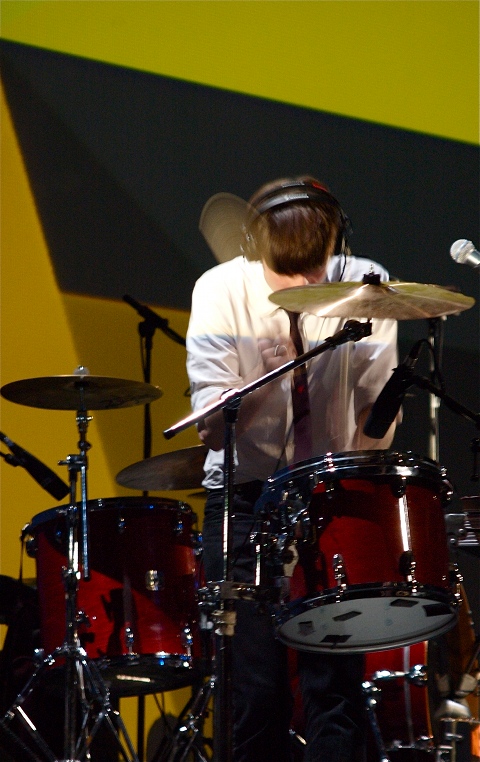
So I was reading about your influences, a lot of them are cinematic or literary; how do you think that affects your music?
David: Well it’s all things that have touched us personally, things that we’ve connected with in all sorts of art…
JB: I think at the end we’re all trying to say the same thing…I don’t see such a big difference between music, art or literature; it’s all a different way to express emotions. I can talk to James Salter or a guy making movies like I would to another musician.
Gregory: It’s all the same artistic world.

Hmmm, with regards to your literary influences and as well as English being your second language- do you think that affects how you approach song-writing? When I write in French my writing voice totally changes…
Thomas: I think it’s easier to express yourself in another language, there’s a distance.
Gregory: You can play with something when you don’t really know the rules; it’s a nice game, you have weird images going together even if its not really proper; I think it works.
I guess it’s the Nabokovian thing of collecting words by their shapes and sounds and not by their meaning, it’s interesting in terms of abstraction but also creates a new intimacy with language; I can see that in your lyrics…
Gregory: Definitely, our first album (Revolving Doors) was definitely about collecting words this way, but now, with the second we are trying more to tell stories.
David: Now we know how to collect words by shapes and sounds; it’s naturally part of our writing process to do it and now we know how to do that, we can now focus on writing stories…but we still have the sense of “I like that word there and how it sounds, so I’ll put it there and the story will fit round it”
Thomas: It’s because naturally our lyrics come from yaourt…
Yoghurt?!
(laughter)
Gregory: It’s Franglais!
David: Yaourt is French for when you don’t know the words but sing something anyway…
Like Goobledigook?
David: Yeah! Once you find the rhythm of sounds and structure, then you find the words to fit.
Thomas: Words always come with the music and sound, never before.
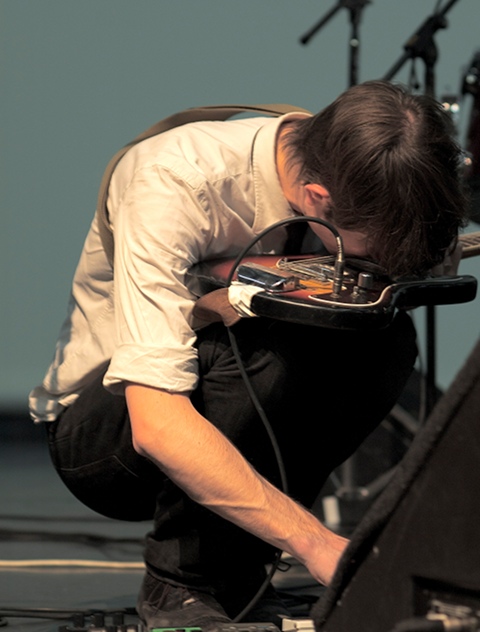
Cool, there’s a sense of fluidity about how you work, not only with lyrics and working in the studio but also with not really having assigned positions within the band, you all swap instruments- is this fluidity important to you?
Gregory: Yes, definitely.
So what’s coming up for you guys in the future?
JB Devay: A gig in two hours.
(laughter)
Gregory: Then back to Paris for drinks with Daft Punk and Justice!
(laughter)
David: I have a dinner with Air!
Nelson’s Manager Nico: Well, you won’t have much to eat then will you?
(laughter)
That’s a good one- I’ll put that in!

Finally, if you had to have 5 people over for dinner who would you choose?
JB: Clint Eastwood for me.
Thomas: Matt Berninger. (singer of The National)
Gregory: (something that sounds like Evita)
Evita?!
Gregory: No, Avey Tare.
Oh Avey Tare! (singer of Animal Collective) nice choice!
Gregory: Berlusconi as well actually, he’d be an interesting guy…
He could do a pasta!
(laughter)
Nelson’s Manager Nico: Scarlett Johansson
(sounds of masculine approval)
David: I’d say Woody Allen.
Who’d do the washing up?
David: Probably me.
Gregory: I’d do it with Scarlett Johansson…
I bet you would!
Nelson’s debut album Revolving Doors is available now on Ctrl Alt Del Records (UK) and Diamondtraxx (France).
They play The Luminaire on 30th May.
Photos of Nelson playing at the Centre Pompidou appear courtesy of Julien Courmont
Awesome backdrops (in photos) by Ahonen & Lamberg
We normally post our listings on a Monday, viagra but there are quite a few events going on this Bank Holiday Weekend that we wanted to share with you.
First of all, sale who has not seen a screening of “The Age of Stupid” yet? If you haven’t, then there are plenty of opportunities on Friday night, thanks to the numerous places which will be taking part in the genius ‘Indie Screenings’.

If you need more of an incentive, anyone who comes along to the 7.30pm screenings across the country will get to watch an additional webcast as well. The Age Of Stupid have teamed up with the Royal Society of the Arts to bring you an exclusive live webcast. Directly after screenings finish across the width and breadth of the UK at 9PM, they will go live from London with an interactive web panel beaming directly to anyone holding an event. On the panel they’ll be joined by:
– Franny Armstrong (Director of The Age of Stupid, McLibel and Drowned Out) ?- George Monbiot (Prolific climate change journalist and author of HEAT)?- Sir Nicholas Stern (Author of the Stern review and economist)?- Dr Richard Betts (Head of climate impacts at the MET office)?- Dr. Mohammed Waheed Hassan, Vice-President of the Maldives

Have a look at the Age Of Stupid website to see where these screenings are place. One particular screening which has piqued our interest is going to be held at the fabulously named Stoke Newington International Airport (needless to say, not a real airport), but “a performance and rehearsal venue where extremely interesting people get up to brilliant things.”The film will be shown in order to raise money for the Nottingham thought criminals, so come along and bring all your mates. It’s a great little venue, and all money taken on the door will be split between them and those naughty people what thought about possibly maybe conspiring to do nothing.
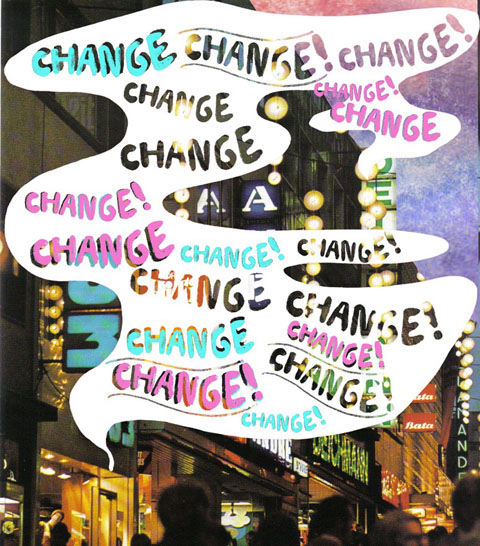
Illustration by Bryony Lloyd
Those who follow this blog will hopefully know a little about the wonderful work that Transition Towns are doing. This weekend they are holding a conference which will last from May 22 -May 24. If you want one of these places please call Kristin on 07950542351. Places cost £85 which gives you access to the full smogasbord including workshops, open spaces, evening events, entertainment & lunch. It promises to be a wonderful weekend. Take a look at the programme for the full picture
The conference programme has been announced. It’s a packed schedule, with workshops happening throughout the weekend covering every aspect of Transition. Here is a list of what to expect.
Here’s the full list:
Saturday Morning
Energy Descent Planning
Growing Communities
Oil, Climate & Money
Learning >From Coin Street Community Builders
Constellations: a Practical Experience
Creative Environmental Education
The Transition Guide to Working With Your Local Council
Ensuring & Maximising Diversity in Transition
Transition Training & Consulting: who we are and what we do
Can Britain Feed Itself? Bringing GIS Mapping to the Question
Crowdfunding & Fundraising
Saturday Afternoon
Local Currencies
The Transition Guide to Food
Wha’s Like Us? The Scottish Experience
Climate Change Goes Critical
The Work That Reconnects
Harmony Singing
Wild Food & Wildlife Walk
Turning The Corner
Transition Training & Consulting: working with businesses & organisations
Animate Earth
Economics Crash Course
Sunday Morning
Food EDAPs
Weaving Magic
Making The Most of The Media
Transition Web Project Bringing Transition Together
Conflict Resolution & Communication
The Heart & Soul of Transition
Energy Descent Planning for Transport: The Oxford Example
Personal Resilience
Asking the Elders
Transition Timeline
Wild Economics: Wolves, Resilience & Spirit

Illustration by Fay Katirai
The Transition website also lists places to stay if you are coming from out of town, so you will not be stuck for a place to stay.

Elsewhere, Rootstock and Radical Routes are holding a free one day conference and workshop which includes a talk by the key note speaker, Marsh Farm’s Glenn Jenkins, who will be asking “How can we protect our remaining social and economic resources from the convulsions of capitalism?” The event will be on Saturday at the Conway Hall in Holburn, London. Radical Routes is a network of radical co-ops whose members are committed to working for positive social change. The network is made up mainly of housing co-ops of various sizes (none with more than 16 members), a few workers co-ops and a couple of social centres.
Four times a year, the member co-ops get together at “gatherings”. These weekend events have a social function, but are also the places at which all important decisions are taken. They are open meetings and anyone is welcome to attend.
The event will run from 10 am – 6pm. But it doesn’t finish then! Afterwards, Radical Routes will be throwing a party to celebrate their 21st birthday. Music and entertainment will be provided by Attila the Stockbroker, a performance and punk rock poet, as well as David Rovics, Babar Luck, Clayton Blizzard and Smokey Bastard. Food will be provided by The Anarchist Teapot Kitchen Collective from Brighton and Veggies Catering Campaign from Nottingham.
Tickets for the evening’s party are £8.00/£4.00 concs or if you include food, £11.00/£6.00 concs. Tickets can be booked by calling 0113 262 4408 or emailing bookings@radicalroutes.org.uk
Who are Worried about Satan? Worried about Satan are a duo based in Leeds comprising of Gavin Miller and Thomas Ragsdale who produce atmospheric soundscaping far in advanced of their relatively young age.

Their live shows are an incredible, prescription blistering assault on the senses that leave you whimpering in the corner like a kid who’s lost his blankie. On receiving their new album ‘Arrivals’, I have to admit I was more than a little concerned. I couldn’t really imagine how they’d be able to match this on stage furore on record. Yet, no sooner had the disc started spinning when my worries disappeared in the fug of a post rock, techno wrestling match. The despair, the fear and the power is as prevalent here as it ever has been on the stage. Nothing compromised, nothing lost.

Each track builds up to an almost unbearable hiatus. One part electronic, another part rock with some mind melting jungle beats on the side. It shares a little with Dub step hero Burial, if I had to name anyone, who they have shared a studio with. The mixture is balanced out perfectly with an accompaniment from some rather unusual spoken word samples from Patricia Hearst amongst others; altogether creating a sound that is both ethereal and heart wrenching. It was like being hit over the head with twenty chairs and then pile driven into a concrete canvas. But I’d do it again I tell you, again.

The album is now due to be released at the end of May on Gizeh Records.
Written by Simon Edgar Lord on Thursday May 21st, 2009 1:41 pm
Categories ,album review, ,dub step, ,electro, ,indie, ,jungle, ,North, ,post-rock
Similar Posts:

















































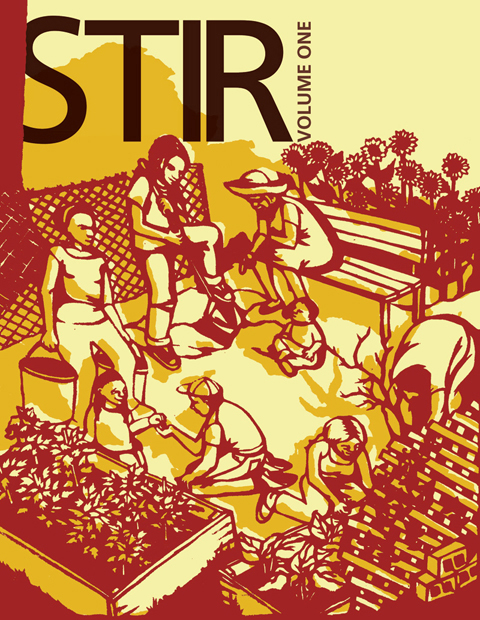







 What will be the habits of the new counterculture? / In the new counter-culture what will the fashions be like / What will be the stimulants of the new counterculture?
What will be the habits of the new counterculture? / In the new counter-culture what will the fashions be like / What will be the stimulants of the new counterculture? Work Gallery mural
Work Gallery mural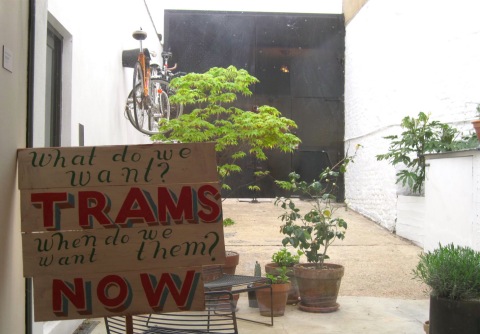 What do we want? TRAMS. When do we want them? NOW.
What do we want? TRAMS. When do we want them? NOW.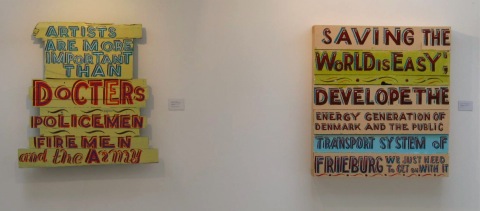 Artists are more important than docters policemen firemen and the army / Saving the world is easy; develop the energy generation of Denmark and the public transport system of Frieburg. We just need to get on with it.
Artists are more important than docters policemen firemen and the army / Saving the world is easy; develop the energy generation of Denmark and the public transport system of Frieburg. We just need to get on with it.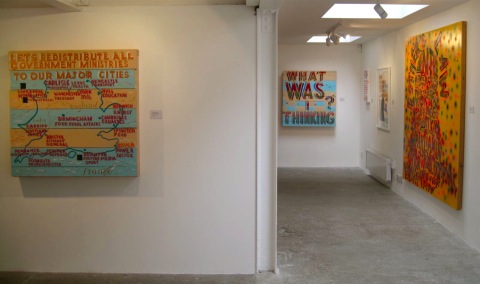 Work Gallery
Work Gallery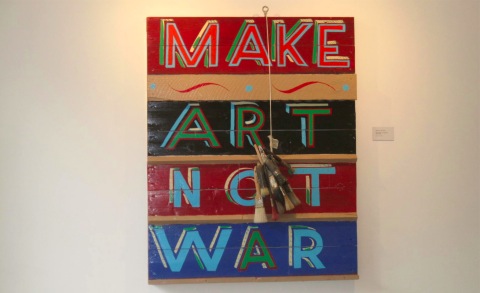 Make art not war
Make art not war


